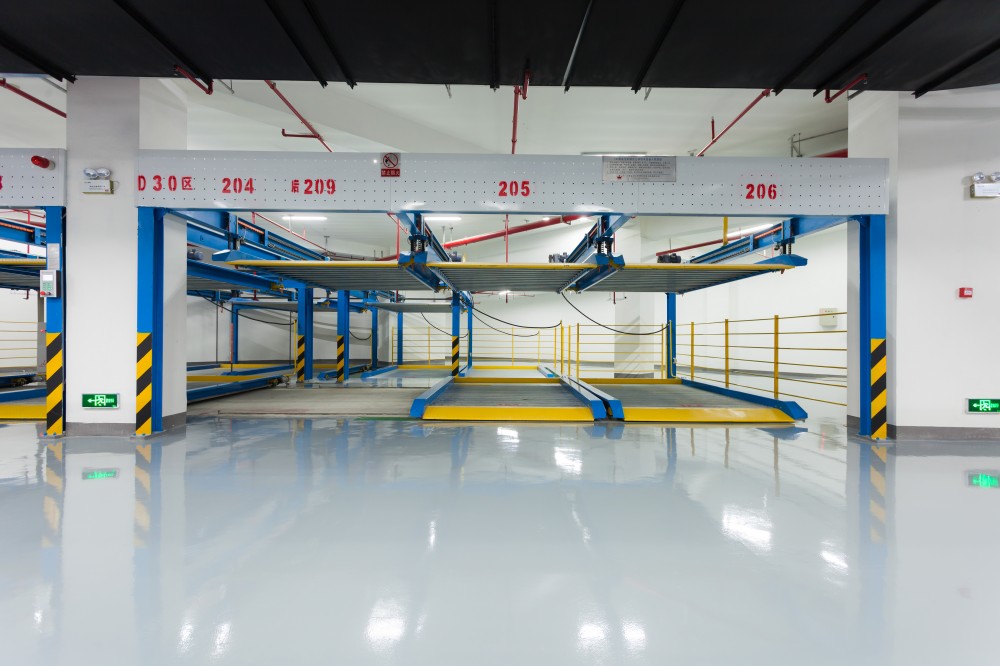In an increasingly crowded urban environment, finding an efficient and intelligent parking solution seems to be a luxury. Mechanical stereo garages have become the star of modern parking systems with their excellent space utilization and automation. However, for many users, it is still a challenge to understand the working principle of this high-tech equipment and answer common questions. This article will analyze the working principle of mechanical stereo garages in detail, answer some common questions you may encounter during use, and give you a comprehensive understanding of this equipment.
Working principle of mechanical stereo garage
1. The core of the automation system
A mechanical parking garage (also known as an automated parking system) is a facility that automatically parks vehicles at a predetermined location through a complex set of mechanical and electronic systems. Its core lies in:
Input system: After the car owner drives the vehicle into the garage entrance, he operates through the input system (usually a touch screen or recognition system). The system will record the vehicle information and start the parking process.
Conveyor systems: Conveyor systems inside the garage transfer vehicles from the entrance location to the parking area. These systems usually include conveyor belts, elevators, rotating platforms, etc.
Parking system: Finally, the vehicle is moved to its designated parking spot. This process may include horizontal and vertical movement, and some systems may even rotate to adjust the vehicle’s position.
2. Functions of the main components
Lifting platform: used to lift the vehicle in the vertical direction and transfer the vehicle from the entrance to the parking floor.
Horizontal Conveyor: Moves vehicles on a horizontal plane, transferring vehicles from one area to another.
Rotating Platform: When needed, the vehicle can be rotated to park at the correct angle.
Control system: includes central control computer and sensors, responsible for the coordinated operation of the entire garage to ensure smooth entry and exit of vehicles.
FAQ
1. How safe is a mechanical stereo garage?
A: A variety of safety factors are considered when designing a mechanical stereo garage, including:
Redundant systems: Critical components often have backup systems in case the primary system fails.
Sensor monitoring: Sensors in the garage monitor the status of equipment in real time, can detect abnormalities and automatically shut down the equipment to prevent risks caused by failures.
Regular inspection and maintenance: Regular maintenance and inspection can ensure that the equipment is in optimal working condition and further improve safety.
2. What should I do if the equipment fails?
A: When you encounter a device failure, you should first:
Check the error message on the display or control panel: Most mechanical stereo garages are equipped with a fault diagnostic system that will display error codes or messages on the control panel.
Contact a professional repairman: For complex faults, it is recommended to contact the equipment supplier or a professional repairman for processing. Do not try to repair it yourself to avoid causing more serious damage.
Check for common problems: Sometimes, a malfunction may be due to a sensor or operating error, and referring to the FAQ in the user manual may help.
3. What is the maintenance frequency of a mechanical multi-story parking garage?
A: To ensure the normal operation of the mechanical stereo garage, it is recommended that:
Regular inspection: A comprehensive inspection is carried out every 3-6 months, including mechanical components, electrical systems and control systems.
Lubrication and Cleaning: Lubricate moving parts regularly and keep the interior of the garage clean to prevent dust and dirt from affecting the equipment.
Software Updates: Check and update the control system’s software to ensure the system has the latest features and security patches.
4. How to improve the utilization efficiency of mechanical multi-story parking garages?
A: To improve usage efficiency, you can start from the following aspects:
Train operators: ensure that operators are familiar with the use of the equipment to reduce operating errors.
Reasonable parking layout arrangement: Optimize parking layout according to the design of the garage to reduce the time and distance of vehicle transfer.
Monitoring and analysis: Use data analysis tools to monitor the usage of the garage, adjust operating strategies based on the data, and improve overall efficiency.
Conclusion
Mechanical stereo garages, with their high efficiency and intelligence, provide innovative solutions to modern urban parking problems. By understanding their working principles and solving common problems, you can make better use of this equipment and improve the efficiency of parking management. If you have more questions about mechanical stereo garages, or need professional installation and maintenance support, we are always ready to help you.
Post time: Nov-12-2024
